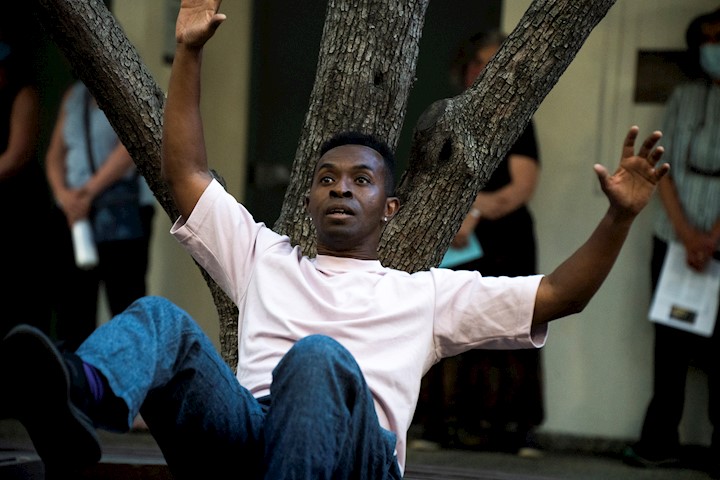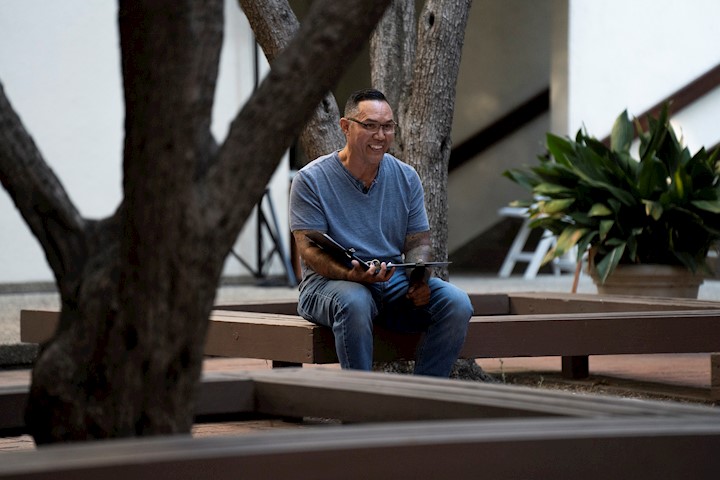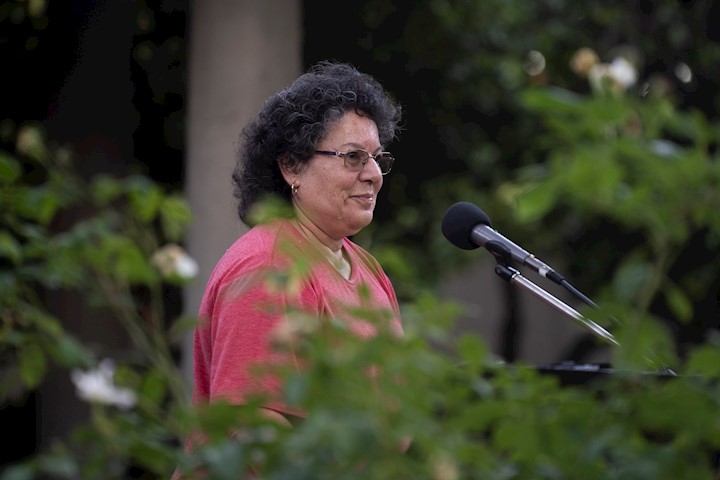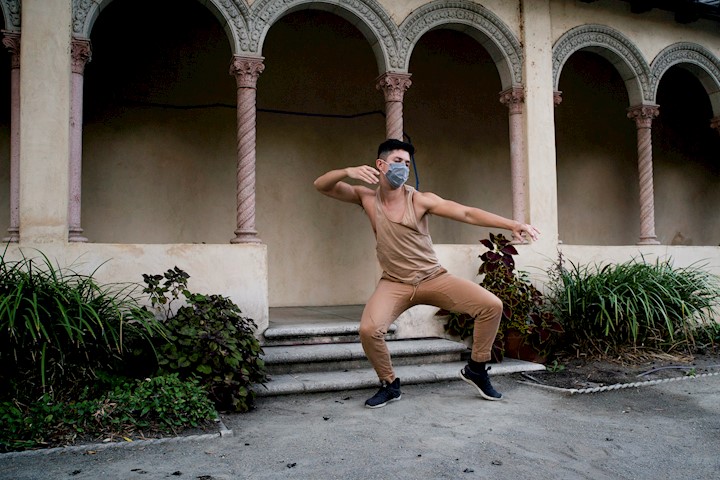“What can we imagine for ourselves and the world?”
In her 2021 book, We Do This ‘Til We Free Us, organizer, educator, and curator Mariame Kaba grounds abolition in this question. Prison abolition is often misunderstood as a movement that begins and ends with eliminating imprisonment, policing, and surveillance. While this is an essential goal of the abolitionist movement, it is inextricably bound to creating lasting alternatives to punishment and imprisonment; to developing resources that will address the conditions of oppression and violence that feed the prison industrial complex. Abolition as a political framework requires envisioning a new societal structure, rooted in care, prevention, and access. Abolition is as much about dismantling as it is about building and creating.
“What can we imagine for ourselves and our world?”
And then, how do we embody this vision? Abolition’s expansive program nurtures endless possibilities for representation and experimentation (Kaba). In collaboration with other modes of organizing and resistance, art can be a transformative tool. In her 2020 collection of essays, Funny Weather: Art in an Emergency, art critic Olivia Laing situates arts and culture as liberatory portals through which we can expand our ethical landscapes and practice new ways of living. At its best, art sustains and propels us. As dancers, choreographers, writers, or anyone engaging with cultural forms, our criticism and rage must fuel us to seek and enact creative solutions. Let us consider art as a tool to recondition our views through presentations of a radical [abolitionist] future.
Undanced Dances Through Prison Walls During a Pandemic is one such presentation; a project in deep service of prison abolition - both its sweeping vision and its intermediate steps. Undanced Dances is an iteration of Dancing Through Prison Walls - choreographer Suchi Branfman’s five-year choreographic residency inside of the California Rehabilitation Center, a medium security state men’s prison in Norco, California. Branfman facilitated dance inside the prison from 2016 until March 2020, when the California state prison system ended all programming and visitation due to Covid-19. The project swiftly adapted to these constraints. Incarcerated dancers began to write their choreographies and send them to Branfman on the outside. The resulting work is instructive, imaginative, poetic, and personal. The writings are more than didactic instructions. The choreographer/authors imbue their choreographies with personal narrative, generous emotional insight, and reflections on confinement and freedom.
Since the project began, Branfman, serving as artistic director, has committed to bringing the work to the outside world, including creating embodied performances of these written choreographies. The most recent took place on November 13, 2021 at Scripps College in Claremont, CA. The event highlighted six of the dances: The Mountain, A Solo, and “Safety and Security” Two Nations’ Borders by Terry Sakamoto Jr., Richie’s Disappearing Act by Richie Martinez, Mapping a Journey to Visit Me by Landon Reynolds, and Internal Battle: Negative and Positive by Brandon Alexander. These were embodied by dancers Bernard Brown, Jay Carlon, Irvin Manuel Gonzalez, Leo Manzari, Mims, and Tom Tsai, all of whom had previously joined Branfman inside Norco. Six narrators – Terry Sakamoto Jr., Richie Martinez, Daniel Duron, Ernst Fenelon Jr., Susan Bustamante, and Marc Antoni Charcas – read the pieces aloud; a rhetorical score guiding both the performers and the audience through each piece. The narrators were all formerly incarcerated individuals, five of whom participated in the Undanced Dances project while inside.
Branfman staged the dances outside, throughout the Scripps campus, with the exception of one pre-recorded performance. The audience was divided into two groups. Guided by students in a prison abolition collective based at the Claremont Colleges, each group navigated the campus concurrently, cycling through each dance and then reuniting for a closing discussion with the entire cast – a “Final Dance.”
My role in this event was one of both collaborator and audience. I had the honor of working with choreographer/visual artist Mokhtar Ferbrache to curate his vision – a hybrid work of painting and performance. Since being released four months ago, Ferbrache has been exploring, as he describes it, “the freedom in making abstract art.” Ferbrache participated in the Dancing Through Prison Walls project while inside, choreographing several dances and generating a body of written work. For Siren, Ferbrache performed the application of paint to canvas, using broad and purposeful gestures set to music. Video documentation was shown alongside the finished work; the paintings a map of Ferbrache’s movements, vibrant traces of his liberated gestures.
I was present throughout the day for installation, run-throughs, and to feel the singular camaraderie and care of the Dancing Through Prison Walls community. I offer not an unbiased review of the day’s event, but instead, a few reflections, observations, and excerpts that I hope convey the essentiality of the project.
In a courtyard of olive trees, author/choreographer Terry Sakamoto Jr. and dancer Bernard Brown performed Sakamoto’s piece entitled The Mountain. In this work, Sakamoto describes his workout routine in the prison yard as a solo dance in an imagined theater:
The echoes of the teatro are calm and haunting in the same sense of feeling safety. My solo routine starts off with my arms out stretched towards the sky, trying to touch the rafters, stretching tip-toe, reaching, head up to the sky.
Released in 2020, Sakamoto Jr. was present to narrate his piece and to work closely with Branfman and Brown as they developed the physical embodiment of his words. Their mutual trust and respect is evident as they move and perform together. They begin on separate sides of the courtyard. Brown personifies Sakamoto Jr.’s written movements - stretching his arms, running in place, doing push-ups – but he also conveys the emotional release implicit within each exercise. At the end of the dance, the two unite, walking off the courtyard together. Sakamoto moves freely in space while recounting the imagined freedom he had to create while inside.
Two of the dances – Mapping a Journey to Visit Me by Landon Reynolds and “Safety and Security” Two Nations’ Borders by Sakamoto – detail the journeys that each of their family members routinely made to visit them while in prison. These choreographies include more narrative than specific steps, so Branfman and the dancers had to deeply consider the feelings and imagery described in order to effectively translate them into movement. Reynolds’ work, narrated by his friend Daniel Duron, writes of his loved one’s journey through the agricultural South Valley:
Here is where a lot of California’s produce is grown. So, the dance will reflect something of nutrition and abundance … no matter how many times we visit, it’s always anxiety. The visit can be cancelled any time…
Interpreted by tap dancer Leo Manzari, we feel the nourishment of reunion in Manzari’s broad gestures and the unsettling anticipation in his percussive, syncopated footwork.
Similarly conceptual in form, Richie Martinez’s piece Richie’s Disappearing Act, interpreted by Jay Carlon, presents a poetic list of 18 ways in which Martinez survived confinement through metaphorical escape:
- I always disappear from here. So, here we go.
- I close my eyes and I’m somewhere else.
- It’s somewhere I’ve been before. I’m so versatile so I’ve been to a lot of places.
- Lately I’ve been skydiving, something I have yet to do. So, I disappear in a sky full of clouds. Free falling.
Richie is deeply confined, but moves freely and confidently through the geographies of his mind. Carlon echoes this through his movement. He performs the piece in an open field, surrounded by a wide circle of audience members. Martinez’s pre-recorded voice reverberates throughout the performance and incense floats through the air. Carlon’s movements are bold and uninhibited, while carrying the solitude of Martinez’s figurative disappearances.
Whether through writing, performance, or visual art, to share your vision and experience with others is a generous offering. The choreographers who wrote and shared their work give abundantly in service of personal and collective freedom. Through their openness and vulnerability, those similarly affected may feel seen or freed, and we all may glimpse a radical alternative. As witnesses, we have a responsibility to build on this generosity and ideation. Poet, artist, and theorist Eve Kososfksy Sedgwick champions an interpretive approach she calls reparative reading. Central to reparative reading is the will to generate nourishing solutions from grim revelations. Sedgwick writes, “What we can best learn … are, perhaps, the many ways selves and communities succeed in extracting sustenance from the objects of a culture — even of a culture whose avowed desire has often been not to sustain them.” Our culture works systematically to deny sustenance and survival to incarcerated and formerly incarcerated people. In defiance of this violent disavowal, the Undanced Dances performances demonstrate the resilience and visionary world building within these communities.
“What can we imagine for ourselves and the world?”









A note on the dances: I recommend reading the Undanced Dances Through Prison Walls During a Pandemic publication, available through Sming Sming Books. The dances performed at Scripps, and more, are reprinted in full. I encourage a complete reading of these important words.
A note on abolition: Abolition is a vast, complex, and comprehensive framework that I am still learning about. I encourage looking to writers like Mariame Kaba and organizations like Critical Resistance for deeper engagement.